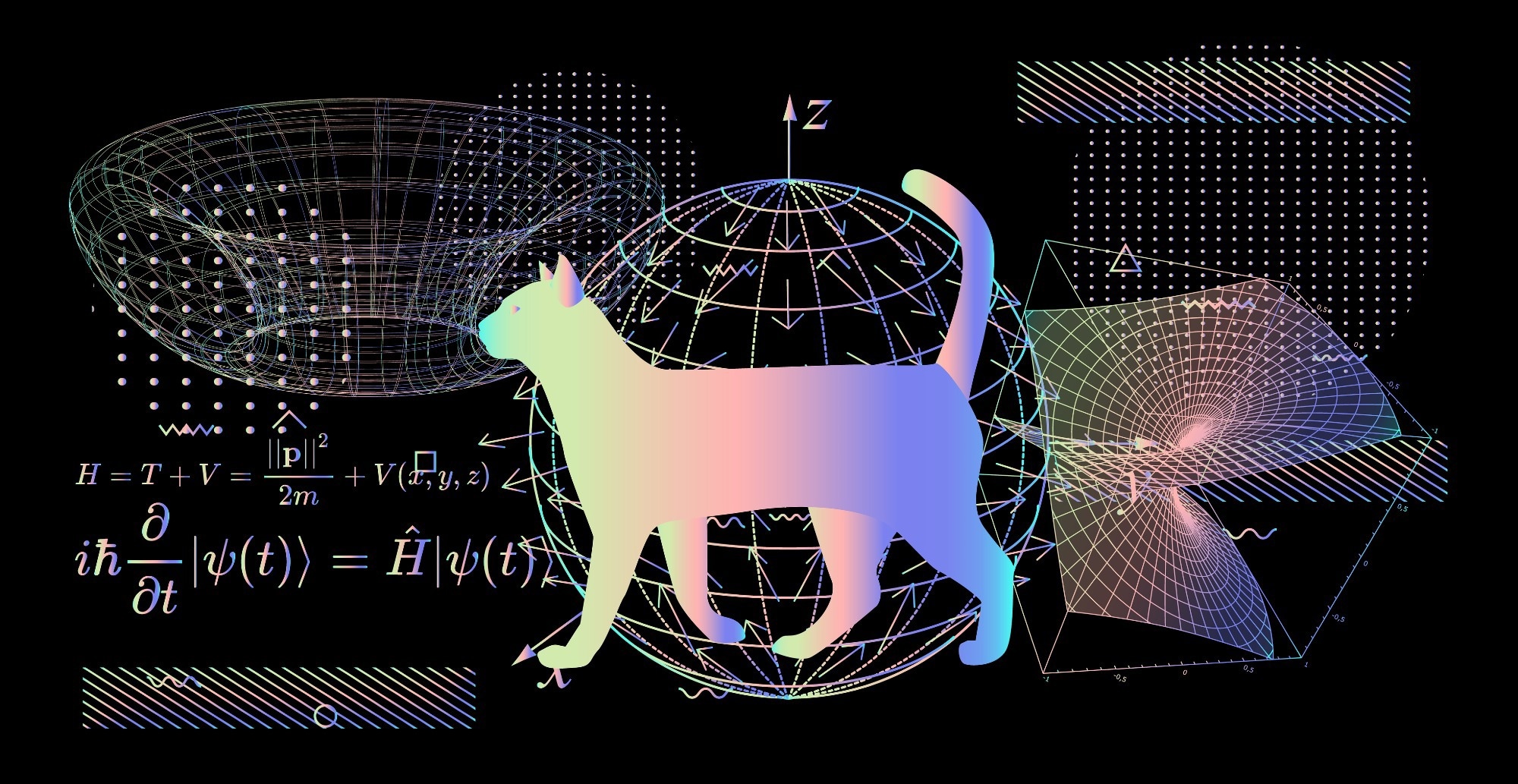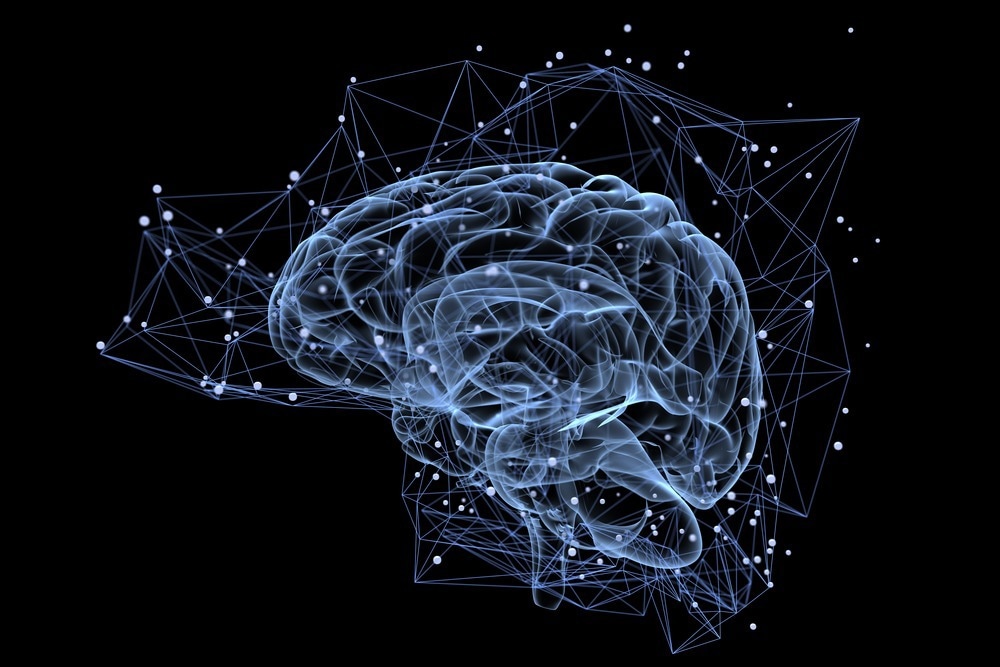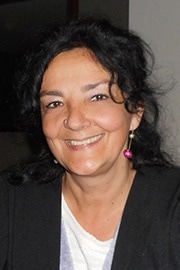AZoQuantum discusses quantum consciousness with Catalina Oana Curceanu from the Laboratori Nazionali di Frascati of INFN, Italy, and her latest research exploring this phenomenon.
Please could you introduce yourself and your scientific background?
My name is Catalina Oana Curceanu and I am an experimental physicist, head of a group of about 20 scientists and explorers of the Universe at the Laboratori Nazionali di Frascati of INFN (Italy). I was born and grew up in Transylvania (Romania) and, just as a joke, what could a person born in Transylvania work on? Of course….the Schroedinger cat - the cat which is both alive and dead. Beyond the joke, with my group, we are developing cutting-edge technologies and performing experiments both on particle accelerators, in nuclear physics, as well as in the underground laboratory of Gran Sasso, LNGS-INFN, where we try to uncover signals of theories beyond the standard ones.
For the nuclear physics experiments, we do research in the field of exotic atoms, at the DAFNE collider of INFN-LNF, where we form and study atoms where electrons are replaced by so-called kaons – particles produced by a quark (fundamental particle in the Standard Model) and an anti-quark.
The quark in our case is the “strange” quark – one that does not exist in normal matter. That is why we need accelerators to generate it. From our studies, within the SIDDHARTA-2 Collaboration, we measured the strong interaction between kaons and various nuclei; this is very important in itself, but also has an impact on the study of the neutron stars, which – this is a very debated issue – may contain strangeness in their heart. Our experiment contributes by adding a piece to the understanding of processes that may be relevant from particle and nuclear physics up to the stars.
At the Gran Sasso underground laboratory, we instead search for signals which should not be there if standard physics is all there is – in particular, standard quantum mechanics. We search for possible signals of nonlinear stochastic modifications of Schroedinger’s equation, the central equation of standard quantum mechanics.
Such modifications were proposed with the aim to solve the main conundrum of quantum physics: the measurement problem, namely, how a superposition of states collapses towards a definite outcome. To do so, additional, non-linear terms can be added to the Schroedinger equation. This modification, on one side, naturally collapses the wave function, and on the other side produces “new physics”: In our case, the new signal that we search for at Gran Sasso is a so-called spontaneous electromagnetic radiation. In the cosmic silence of Gran Sasso, under the mountain, we are very sensitive to the aforementioned modification of Schroedinger’s equation and set stringent limits on these novel collapse models, including those which relate the collapse to gravity.

Image Credit: local_doctor/Shutterstock.com
Also at Gran Sasso, within the VIP experiment, we search for possible violations of the Pauli Exclusion Principle by investigating the possible existence of atomic transitions prohibited by the principle. Such violations may occur for example in some versions of quantum gravity-inspired models.
All this research is very exciting and makes you feel as if you are at the limit of what you know, stepping into the unknown, scrutinizing new horizons, and investigating the Universe by asking new questions.
Of course, we do not work alone, but in the framework of international collaborations, such as SIDDHARTA-2 [1,2] and VIP [3], and in contact and collaboration with many theoreticians with whom we are discussing our results and strategy.
Can you explain why some researchers first began to associate consciousness with quantum phenomena?
Well, I think it is an attractive idea to think we are special and that our consciousness is a special phenomenon. But, more than that, consciousness does really seem to be a mystery from the point of view of conventional physics, as many prominent philosophers and scientists have argued. It is perhaps the biggest mystery in the Universe and possibly one of the most complex phenomena.
Associating a mystery with another mystery (quantum collapse in this case) is an attractive idea, although I cannot speak for anyone else but myself. This does not mean at all that quantum is rooted in consciousness! On the contrary, the most sophisticated models that associate consciousness with quantum physics are – for as much phantasy as one needs – physics models. It is physics that grounds consciousness or on which the emergence of consciousness depends, and to me, this is attractive because it means we could perhaps one day either confirm or deny these models.
There are other reasons for which quantum physics was proposed to ground consciousness, but I leave the reader to get inspired by reading one of the articles on the Orchestrated Objective Reduction (ORCH OR) model proposed by Penrose and Hameroff. This model connects and actually defines consciousness as a quantum phenomenon in the form of the gravity-related collapse of the wave function [4].
How does gravity connect with these concepts?
Gravity in this framework is the agent which regulates the rate and extent of wave function collapse, and it is the latter that relates to consciousness in the sense of directly giving rise to moments of consciousness. Whenever the wave function collapses - a wave function is defined within the brain for a system (sub-system) involving microtubules - here we are: a consciousness moment comes into being!
The consciousness in this context is not a continuous flow - it is coming into being from this collapse of the wave function. This occurs within a certain time scale, which is defined by the mass which is in superposition, and which generates superpositions of space-time geometries that collapse towards one of the states in superposition. So we see in this model, gravity (actually, spacetime in general relativity) plays a major role; it is to a definite classical spacetime geometry that the superposition collapses, faster and faster as the mass of the system in superposition grows.
Of course, this requires the assumption that there are such coherent quantum states in the wet and humid environment of the brain. But since I am not an expert on this I am not going to comment on this issue. There are better experts than me, such as Stuart Hameroff and Roger Penrose themselves who have discussed this issue in their papers.
Can you explain how theories that fall under the Diósi-Penrose theory differ? Why did you decide to test these ideas?
The Diosi model has well-defined dynamics – the relation between gravity (which is classical) and quantum physics is worked out within a dynamical model which produces definite predictions.
Among these predictions, there is spontaneous radiation emitted by charged particles from which matter is comprised (such as electrons and protons). In Penrose’s case, there is not (yet) a dynamics for his proposed collapse model; however, Penrose gives arguments as to why nature ‘dislikes’ and, therefore, suppresses superpositions of different spacetimes. The more massive the system in the superposition, the larger the difference in the two spacetimes, and the faster the wave function collapses.
Roger Penrose - Quantum Physics of Consciousness
Video Credit: Closer to Truth/Youtube.com
Penrose’s model does not predict spontaneous radiation, though it’s important to emphasize again that his model still lacks any dynamical description.
The rate of collapse comes to be the same for the two theories, even if their motivations are rather different.
Can you describe the kind of experiment that can be designed to test the suggested quantum-consciousness connection?
I think the ideal experiment is not (yet) feasible; one would really need to work with microtubules in the same conditions as in the brain. There is progress in this direction but, again, this is not my field.
However, there are various experiments that are pioneering tests of the two pillars of the model: some of them are searching for quantum effects inside the microtubules, while others are testing gravity-related collapse models. Not, however, on the same system!
The investigation of collapse models is being done presently by searching for spontaneous radiation, as in our case, or for heating effects, with various types of technologies, ranging from underground experiments measuring radiation to optomechanical experiments measuring heating.
There are also proposals to use Bose-Einstein condensates and other micro-systems which should be put in superposition and perform a direct test. The major difficulty in implementing these last ideas consists of creating a superposition of a relatively large mass and keeping it stable for times comparable to Diosi-Penrose times (after which the wave function collapses).
I need to underline again that Penrose’s model does not predict radiation, so in this sense, our test is on Diosi’s dynamics of gravity-related collapse.
What makes your experiments unique?
Radiation has been measured in underground laboratories for many years; the aim of the measurements was mostly research related to dark matter or neutrino physics – both extremely fascinating. However, already in the ‘90s a study of spontaneous radiation as a signature of the collapse was proposed and published [5].
Somehow the idea after Fu’s pioneering research fell into oblivion; we are resuscitating it and performing dedicated measurements which search for the spontaneous radiation predicted by various collapse models. To do this, we work together with theoreticians, such as but not limited to, Angelo Bassi and Sandro Donadi’ from INFN and the University of Trieste, Stephen L. Adler from IAS Princeton, Lajos Diósi, at the Wigner Research Center for Physics and at the Eötvös Loránd University in Budapest, Hungary, and Maaneli Derakhshani of Rutgers University in New Brunswick, New Jersey. We have also had discussions with Roger Penrose on various occasions – in his model, I need to remind the reader, spontaneous radiation is not present. I should also mention the great contributions given to the development of these models by Ghirardi, Rimini, Weber, and Pearl (see articles cited in [6]).

Image Credit: Tatiana Shepeleva/Shutterstock.com
Together with my experimentalist colleagues, Matthias Laubenstein at INFN, and Kristian Piscicchia of CREF and INFN, we then prepared a dedicated experiment and measured very faint radiation at the Gran Sasso underground laboratory, setting strong limits on collapse models and bringing forward this type of research [6,7].
What kind of radiation do the instruments you used normally detect?
We use a High-Purity Germanium detector which is able to measure electromagnetic radiation in a broad energy range domain. The measurement extends from X rays (tens of keV of energy) to MeV. The detector itself is shielded by layers of ultrapure copper and lead, against the still present radiation coming from nuclear decays in the rocks of the mountain itself and from underground (as radon) [6].
Did your tests demonstrate any evidence of gravity-related wavefunction collapse?
No, they did not [6]. Actually, our measurement was very sensitive and the outcome was that the simplest model of gravity-related collapse is to be excluded. When I say the simplest, I mean the model based on a white-noise field that spatially depends on a Newtonian gravitational potential and drives the collapse of the wave function, with no dissipation built into the dynamics. More complex models, where memory and dissipation effects are considered, are presently being implemented, both from theoretical and experimental points of view.
What does this mean for the quantum-consciousness connection?
It means that if we take Diosi’s dynamics for gravity-related collapse as the simplest version thereof, it looks rather improbable that this model can be at the root of consciousness in the way that the ORCH OR theory prescribes [8]. Nothing more, nothing less! We did not claim that we excluded the consciousness model put forward by Penrose and Hameroff, as we made clear in our paper!
We, however, made the first step in the direction of experimental tests which, we hope, will be followed by many others – with different systems, and various models. We proved that this is becoming possible!
During the course of conducting the study was there anything that particularly surprised you?
Nice question! I think the surprise, and I speak for myself, was to discover that you can relate such models which are meant to solve the measurement problem with a model for consciousness. It was already “sophisticated enough” to search for physics beyond the standard quantum physics. Relating this research with consciousness is, indeed – again, for me – a surprise. I learned quite a lot in discussions with my colleagues, and even more in discussions with Roger Penrose.
From the experimental point of view, there were no surprises, only hard work and steps into the unknown since nobody knew what we could expect. Signals from the collapse? Something else?
What is next for this type of research?
On our side development of more realistic collapse models, including dissipation and memory (non-Markovian) effects from theoretical points of view. Experimentally, we plan to do more research in various conditions and with various systems.
Does this research represent a step towards understanding consciousness?
Definitely yes! I do think that models such as the one put forward by Penrose and Hameroff are great proposals for bringing consciousness studies into the field of experimental science, and this is a big step forward!
Where can readers find more information?
[1] C. Curceanu et al., Rev.Mod.Phys. 91 (2019) 2, 025006
[2] https://researchoutreach.org/wp-content/uploads/2020/09/Catalina-Oana-Curceanu.pdf
[3] F. Napolitano et al., Symmetry 14 (2022) 5, 893
[4] [2] Hameroff S, Penrose R. Consciousness in the universe - a review of the ‘orch or’ theory. Phys Life Rev 2014;11:39.
[5] Spontaneous radiation of free electrons in a nonrelativistic collapse model Qijia Fu Phys. Rev. A 56, 1806.
[6] Underground test of gravity-related wave function collapse, S. Donadi et al., Nature Physics volume 17, pages 74–78 (2021).
[7] Novel CSL bounds from the noise-induced radiation emission from atoms, S. Donadi et al., The European Physical Journal C volume 81, Article number: 773 (2021)
[8] At the crossroad of the search for spontaneous radiation and the Orch OR consciousness theory, M. Derakhshani et al., Physics of Life Reviews 42 (2022), 8.
About Catalina Curceanu
 Catalina Curceanu was born in Transilvania, near Dracula’s castle. She obtained her Ph.D. in physics from the Institute of Physics and Nuclear Engineering of Bucharest, Romania, with a Ph.D. thesis dedicated to the study of exotic mesons within the OBELIX experiment at CERN. She is a Senior Researcher at Laboratori Nazionali di Frascati (LNF), INFN, Italy, where she is leading a group of researchers performing advanced experiments in nuclear physics and quantum mechanics. Catalina is the spokesperson of the SIDDHARTA-2 (spectroscopy of kaonic atoms) and VIP2 (experimental test on the Pauli Exclusion Principle violation by electrons and of the collapse models) collaborations and the author of more than 400 peer-reviewed articles. She won several awards and prizes, among which awards from the John Templeton Foundation and from the Foundational Question Institute (FQXi) for projects on quantum mechanics, the 2017 Emmy Noether prize from the European Physical Society, and the 2019 Betty Moore Foundation Fundamental Physics Innovation Award. In 2018 she was awarded the Order "Cultural Merit" in the rank of Knight by the President of Romania, for her significant contribution to exact sciences, who have climbed the ladder, through dedication and professionalism to the élite of the relevant international research.
Catalina Curceanu was born in Transilvania, near Dracula’s castle. She obtained her Ph.D. in physics from the Institute of Physics and Nuclear Engineering of Bucharest, Romania, with a Ph.D. thesis dedicated to the study of exotic mesons within the OBELIX experiment at CERN. She is a Senior Researcher at Laboratori Nazionali di Frascati (LNF), INFN, Italy, where she is leading a group of researchers performing advanced experiments in nuclear physics and quantum mechanics. Catalina is the spokesperson of the SIDDHARTA-2 (spectroscopy of kaonic atoms) and VIP2 (experimental test on the Pauli Exclusion Principle violation by electrons and of the collapse models) collaborations and the author of more than 400 peer-reviewed articles. She won several awards and prizes, among which awards from the John Templeton Foundation and from the Foundational Question Institute (FQXi) for projects on quantum mechanics, the 2017 Emmy Noether prize from the European Physical Society, and the 2019 Betty Moore Foundation Fundamental Physics Innovation Award. In 2018 she was awarded the Order "Cultural Merit" in the rank of Knight by the President of Romania, for her significant contribution to exact sciences, who have climbed the ladder, through dedication and professionalism to the élite of the relevant international research.
Acknowledgments
Catalina Curceanu acknowledges the INFN Institute for supporting the research presented in this interview and, in particular, the Gran Sasso underground laboratory of INFN, INFN-LNGS and its Director, Ezio Previtali, and all LNGS staff, and the Low Radioactivity laboratory for the experimental activities dedicated to the search for spontaneous radiation.
The research discussed in this interview was made possible through the support of Grant 62099 from the John Templeton Foundation. The opinions expressed in this interview are those of the author and do not necessarily reflect the views of the John Templeton Foundation. CC also acknowledges the support of the H2020 FET project TEQ with grant 766900 and that of Centro Ricerche Enrico Fermi (Problemi aperti nella meccanica quantistica project), as well as the ones from the Foundational Questions Institute (Grants No. FQXi-RFP-CPW-2008 and FQXi-MGB-2011).
Interview questions by Robert Lea
Disclaimer: The views expressed here are those of the interviewee and do not necessarily represent the views of AZoM.com Limited (T/A) AZoNetwork, the owner and operator of this website. This disclaimer forms part of the Terms and Conditions of use of this website.